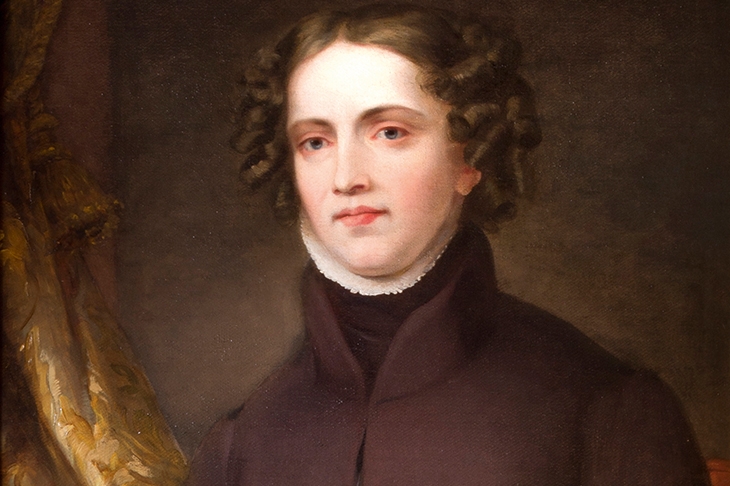In the winter of 1820–1 a 29-year old woman named Anne Lister went to stay with some female friends who lived nearby. This was a visit between gentry families of the sort that Jane Austen describes in her novels. But there the resemblance ends. By the end of her stay Anne had flirted with four women and gone to bed with three of them. She then wrote a letter to another woman, swearing undying love.
We know about Lister’s sex life from the lengthy daily diaries that she kept. She devised a clever code in which she described her sexual encounters in remorseless detail. The German writer Angela Steidele has used the diaries to construct a life of Anne Lister, and a fascinating story it is too.
Lister came from an old Yorkshire family and she lived near Halifax in a house called Shibden Hall. She was ‘odd’. Dressed in women’s clothes of unfashionable black, she had a downy upper lip, wore a locket containing pubic hair and spoke in a low voice. She described herself as a gentleman, and she was mobbed in the street for being a man. People called her ‘Gentleman Jack’.
A compulsive and accomplished flirt, she was an expert seducer. What is surprising is how few of the women she courted refused her advances. Trapped in marriages to dull or brutal husbands, or condemned to lives of enforced spinsterhood, they threw themselves lustfully into Anne’s arms. In a society obsessed with virginity, girls were encouraged to share beds as a protection against marauding males. Little did their parents know what Anne was up to. Complacent husbands accepted Anne’s friendship with their wives and asked no questions about what went on when the two women were in bed together.
Lesbianism was the best-kept secret, unknown to the law and unimaginable to most people, and no one called time on Anne. She built up a network of women with whom she enjoyed complicated on-off relationships and lots of sex. After a fling with Anne, some of her lovers got married as though nothing had happened. As for her family, they seem to have been remarkably broad-minded, accepting her ‘odd’ friendships with women.
When she neared 30, Anne felt the need to settle down and live openly with another woman. She chose an unmarried woman called Ann Walker, who owned the adjoining estate. Lister proposed to her ‘wife’ for the same reason that a man at that time might marry a woman — for her money. She was by now running short of cash, and the chief attraction of Ann Walker was that she had inherited a large fortune. Lister built a moss cabin in the garden to seduce her intended, but Walker didn’t capitulate at once. Lister’s lovers usually succumbed immediately, but she had to ask three times before Ann Walker agreed to sleep with her.
Lister was a bad businesswoman and a compulsive spender. She squandered her wife’s money on improvements to the house, a new garden and disastrous investments in a coal mine and a hotel. The two women quarrelled a lot. Lister seems to have lost contact with reality as she grew older, and she dragged poor Ann Walker with her on a madcap carriage expedition to Moscow. From there, Lister insisted — against all advice — on travelling in the depths of winter to the Caucasus, and it was here that she died of a fever, aged 49.
Some years after Anne’s death one of her relatives discovered the 24 leather-bound volumes of her diaries at Shibden Hall and cracked the code. He was appalled by what he read. Fortunately, he didn’t burn the journals, but hid them behind a panel in the wall. They were rediscovered when the house was taken over by the council; but not until the women’s movement beginning in the 1970s were sections of the diaries published in uncensored editions.
The sex in this book is somewhat repetitive; but Angela Steidele has written a Regency romp which gives a vivid glimpse into a hidden world of female eroticism.






Comments